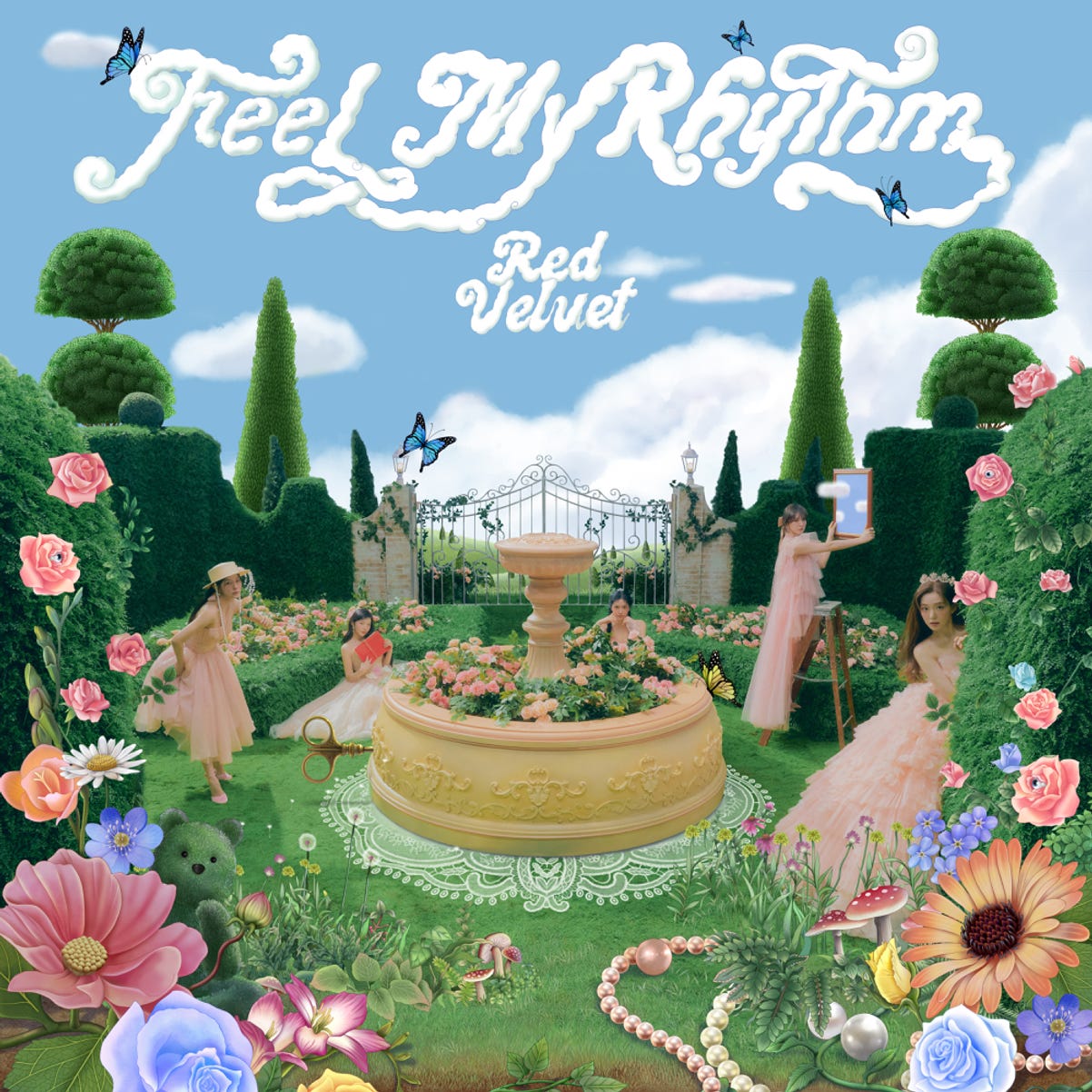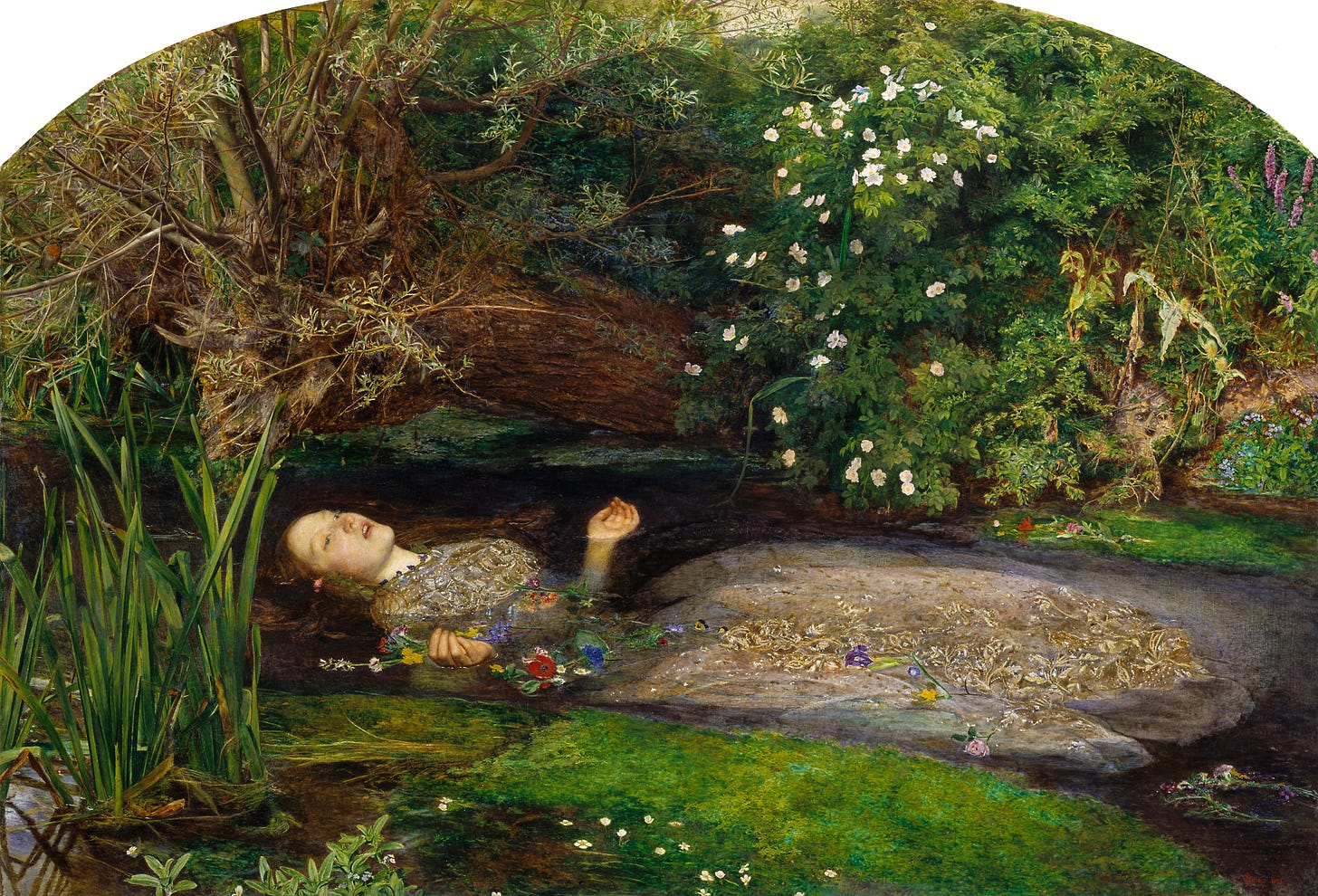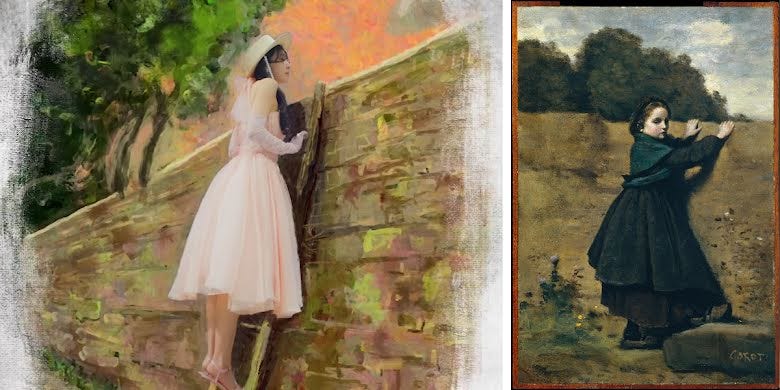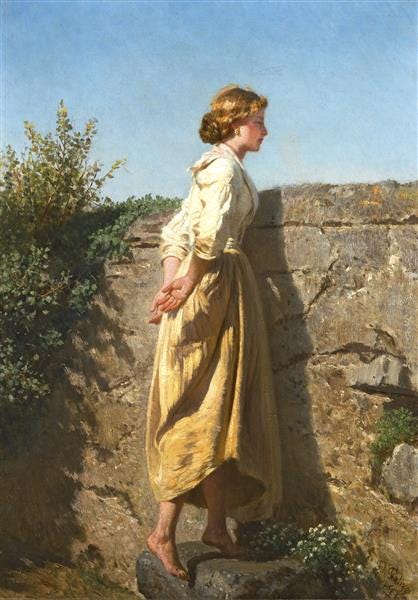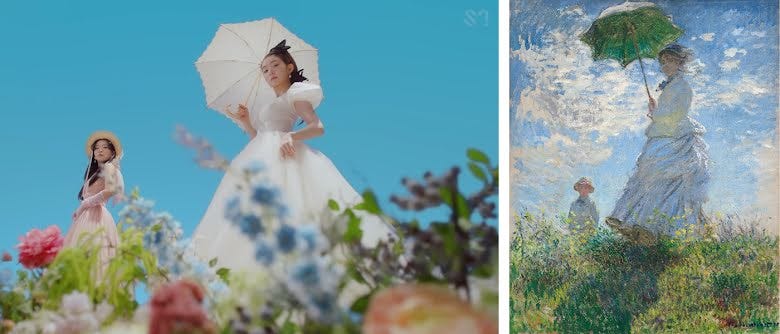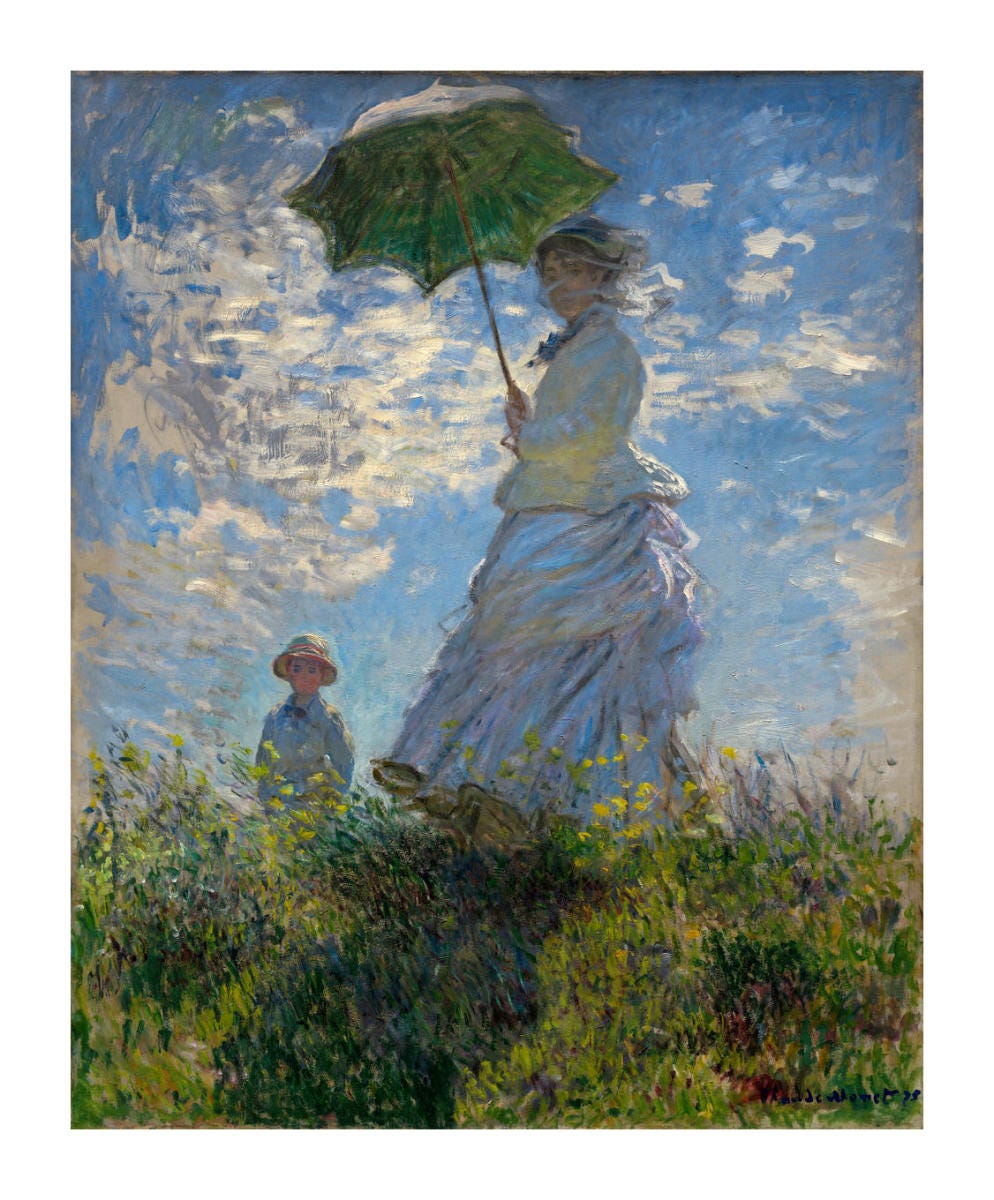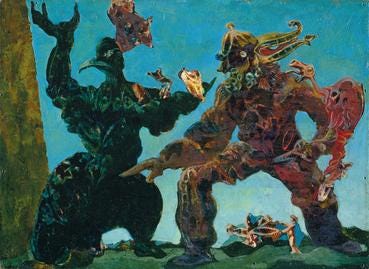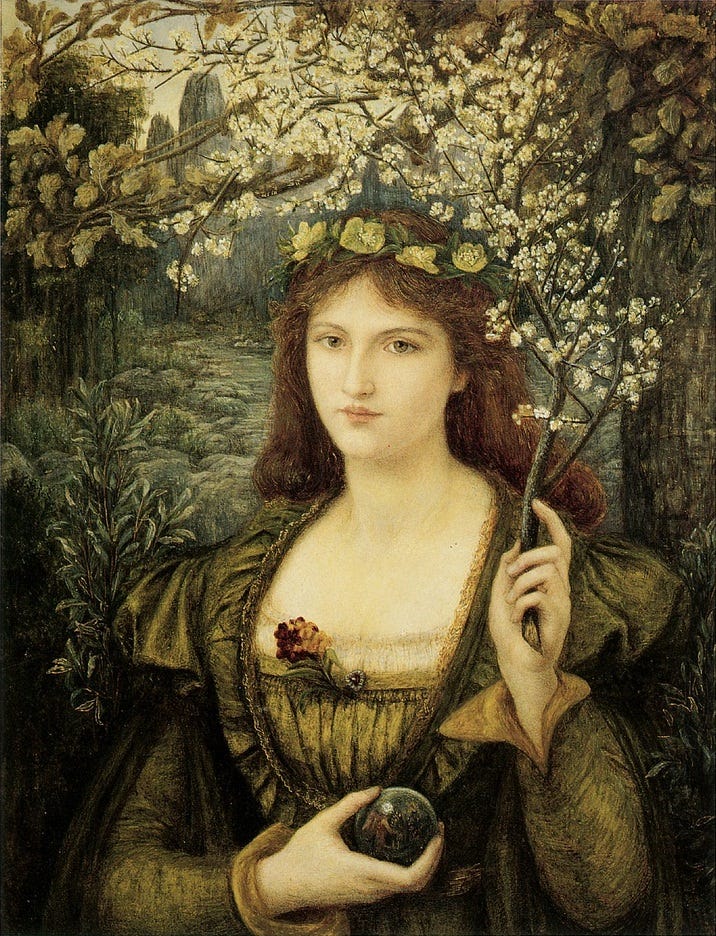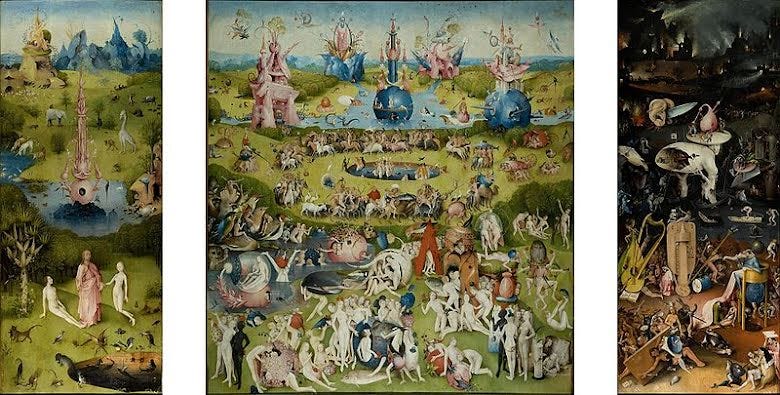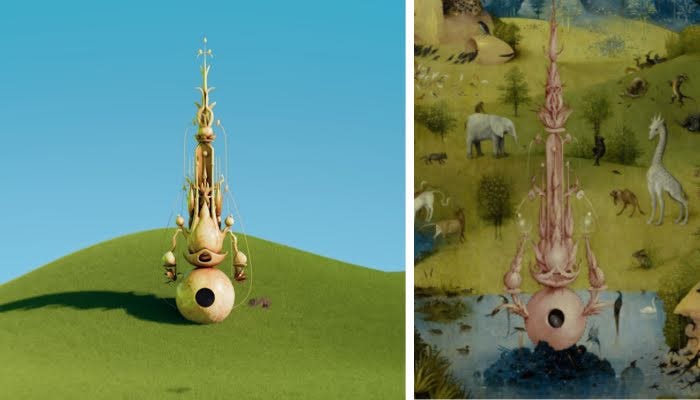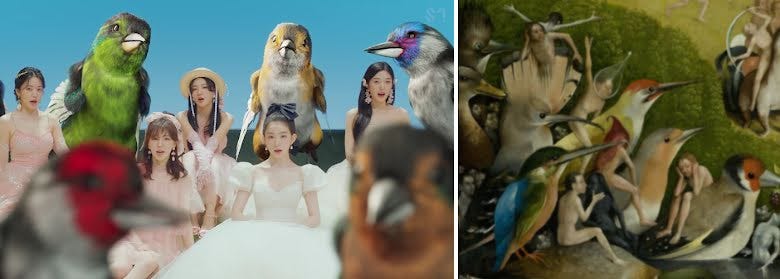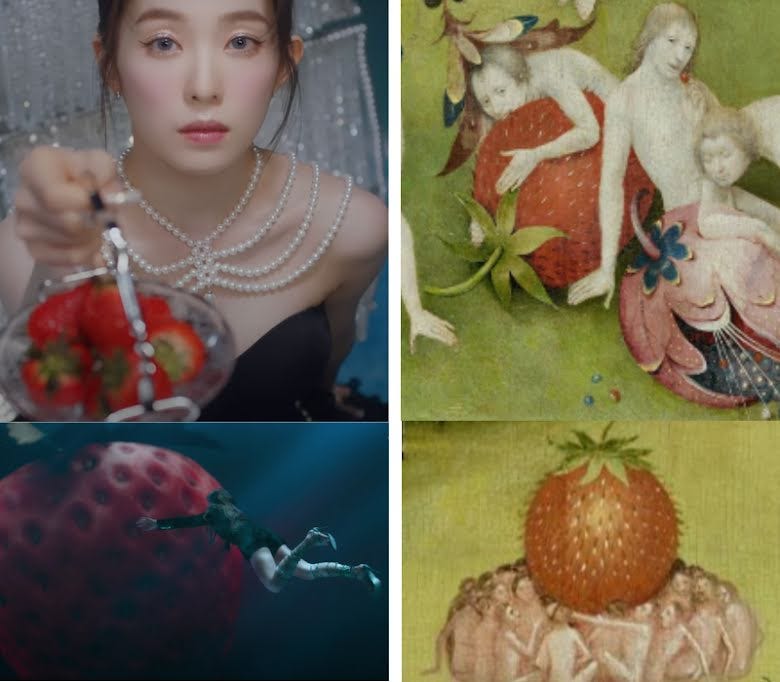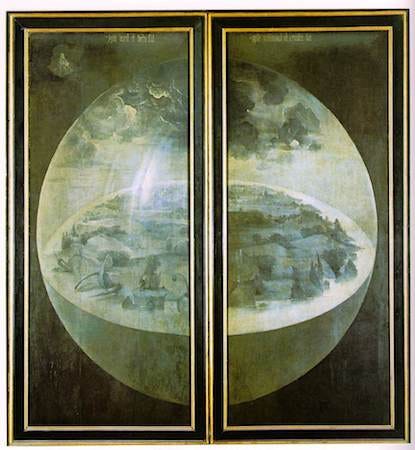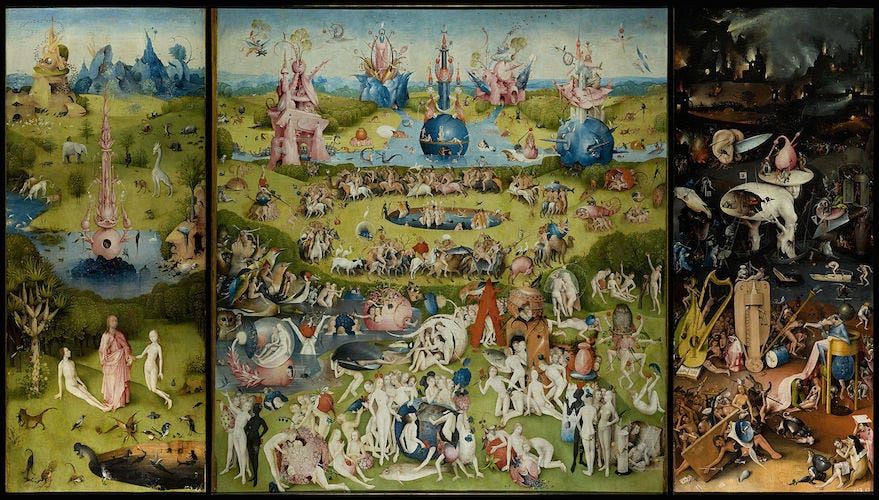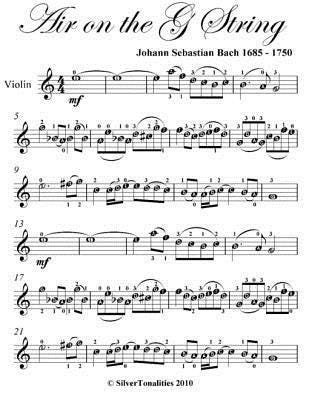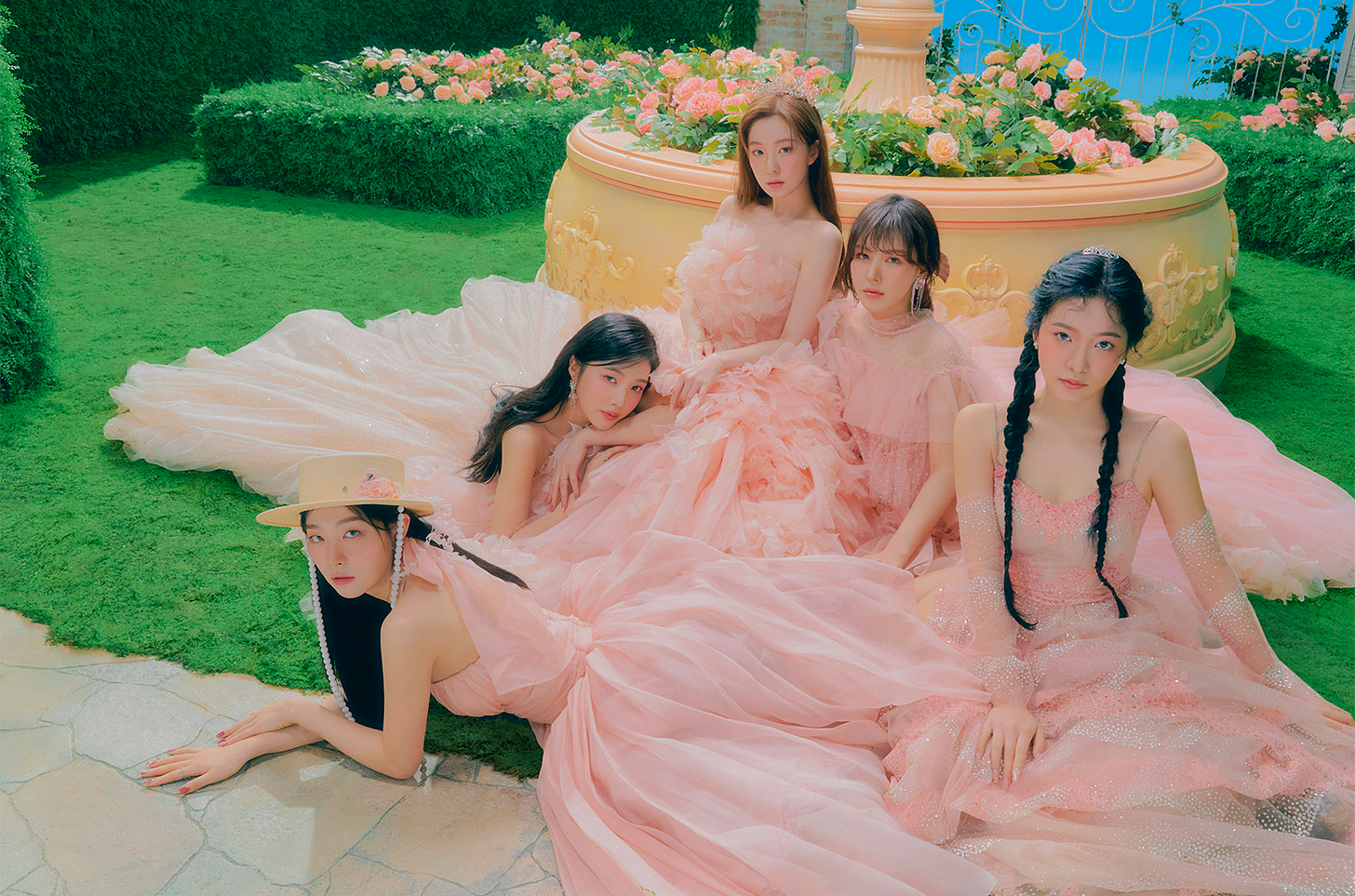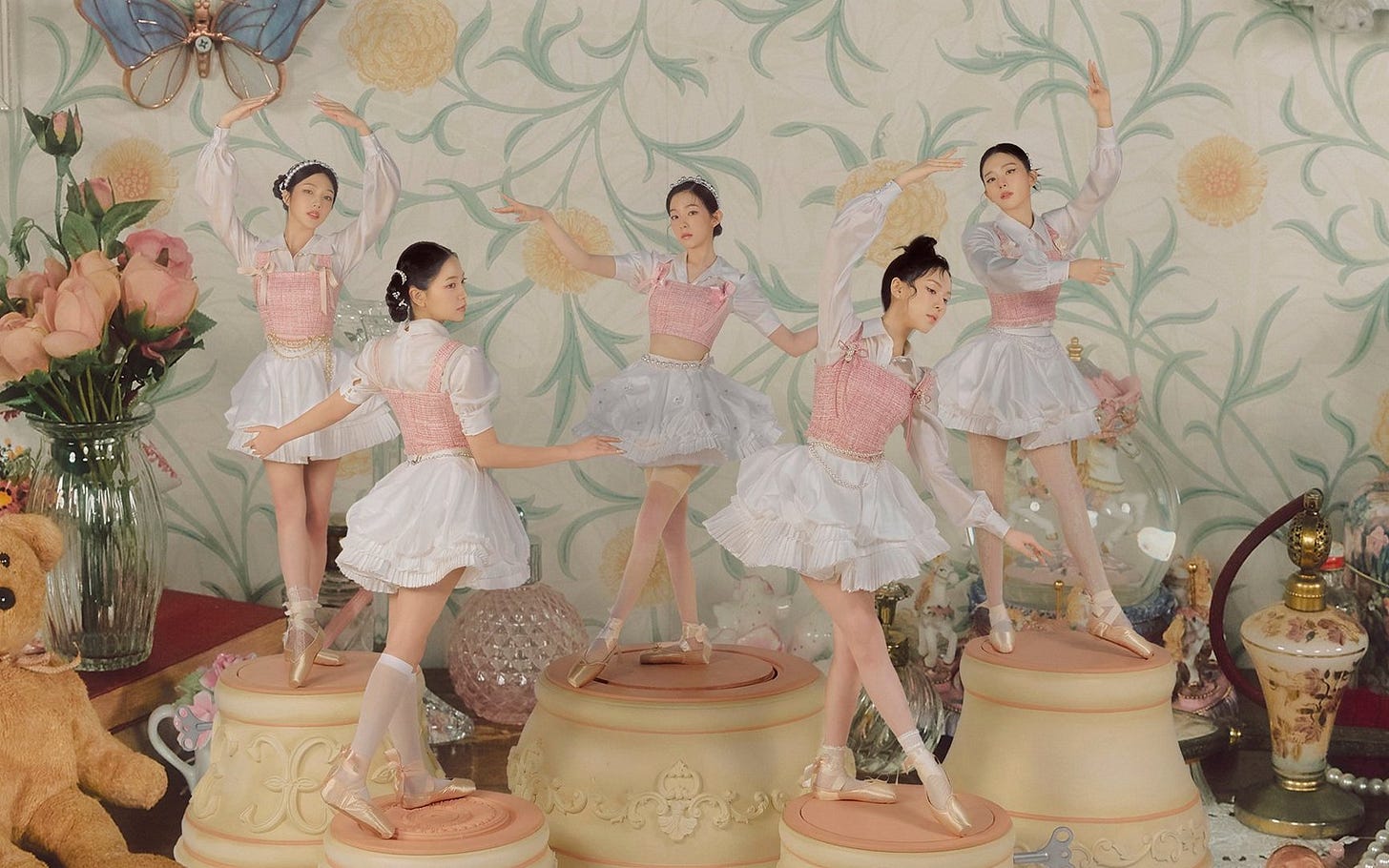Analyzing every artistic reference in Red Velvet's "Feel My Rhythm"
Exploring and reviewing every painting reference in the official music video.
Introduction
On March 21 2022 , the South Korean girl group “Red Velvet” released the official music video for their new song “Feel my Rhythm”. Feel my Rhythm was the title track for the new EP “The ReVe Festival 2022”, an album that showcases the brightness of spring, while playing with darker undertones. Both the song and the album, are a celebration of my two favourite things in the world: classical music and art history. Especially the music video for “Feel my Rhythm” is full of references straight out of European art history, and all those moments of artistic expression have been portrayed with remarkable detail. So, let’s try to find those references in the MV, and analyze their meaning according to the song!
“The Swing” by Jean-Honore Fragonard
The Swing, also known as The Happy Accidents of the Swing is an 18th-century oil painting by Jean-Honoré Fragonard in the Wallace Collection in London. It is considered to be one of the masterpieces of the Rococo era, and is Fragonard's best-known work.
“Ophelia” by John Everett Millais
Ophelia is an 1851–52 painting by Pre-Raphaelite British artist Sir John Everett Millais in the collection of Tate Britain, London. It depicts Ophelia, a character from William Shakespeare's play Hamlet, singing before she drowns in a river.
The work encountered a mixed response when first exhibited at the Royal Academy, but has since come to be admired as one of the most important works of the mid-nineteenth century for its beauty, its accurate depiction of a natural landscape, and its influence on artists from John William Waterhouse and Salvador Dalí to Peter Blake, Ed Ruscha and Friedrich Heyser.
“Nymphs Finding the Head of Orpheus” by John William Waterhouse
“Nymphs Finding the Head of Orpheus” is a painting created in 1900 by John William Waterhouse in Pre-Raphaelite/Romanticism style. Two female deities have happened upon the head of the musician floating in the river Herbrus where they are fetching water. Following Orpheus’ loss of his wife Eurydice, he roamed the land inconsolable and absorbed by his grief and his refusal to concede to the advances of the Thracian Bacchantes incurred their terrible wrath. After his frenzied murder, his severed head was cast into the river with his lyre and as he water lapped over the strings of the instrument, it played a mournful tune to the accompaniment of his singing which continued even after death. The subject was one that was popular in “fin de siècle” Europe, in the work of the likes of Odilon Redon, Gustave Moreau and Jean Delville and of all Waterhouse’s paintings “The Head of Orpheus” is perhaps the most Symbolist, transcending a purely narrative subject and embodying the eternal spirit of music.
“The Curious Little Girl” by Jean-Baptiste-Camille Corot
“The Curious Litle Girl” is a painting created in 1860 by Realist artist Jean-Baptiste-Camille Corot.
However, several paintings could be represented in the scene of Seulgi looking over the wall. Some other ones are:
“Over the Wall” by Filippo Palizzi
“Over the Wall” is a painting created in 1865 by Realist artist Filippo Palizzi and depicts a girl looking over a brick wall.
“Lady Looking Behind the Walls” by Paul Dominique Philippoteaux
“Lady Looking Behind the Walls” is a painting created by Rococo artist Paul Dominique Philippoteaux.
“Gather Ye Rosebuds While Ye May” by John William Waterhouse
“Gather Ye Rosebuds While Ye May” is an oil painting on canvas created in 1909 by British Pre-Raphaelite artist John William Waterhouse. It was the second of two paintings inspired by the 17th century poem "To the Virgins, to Make Much of Time" by Robert Herrick which begins: “Gather ye rosebuds while ye may, Old Time is still a-flying; And this same flower that smiles today, Tomorrow will be dying”.
Lost for nearly a century, this painting was later located in an old Canadian farmhouse. In 1973, a couple was buying the farmhouse and asked its previous owners to keep the painting, which they admired, within the house. Although the new owners knew it was a Waterhouse artwork, they had no idea of its worth or even that it was missing. In 2002, when they took it to an art dealer to be appraised, he "nearly fell off his chair." Nobody knows how the painting ended up in the house, although it is known to have been in Canada since 1959.
“Woman with a Parasol-Madame Monet and Her Son” by Claude Monet
“Woman with a Parasol–Madame Monet and Her Son”, sometimes known as “The Stroll” is an oil-on-canvas painting by Claude Monet from 1875. The Impressionist work depicts his wife Camille Monet and their son Jean Monet in the period from 1871 to 1877 while they were living in Argenteuil, capturing a moment on a stroll on a windy summer's day.
“The Birth of Venus” by Sandro Botticelli
“The Birth of Venus” is a painting by the Italian artist Sandro Botticelli, probably executed in the mid 1480s. It depicts the goddess Venus arriving at the shore after her birth, when she had emerged from the sea fully-grown (called “Venus Anadyomene” and often depicted in art). The painting is in the Uffizi Gallery in Florence, Italy.
Although the two are not a pair, the painting is inevitably discussed with Botticelli's other very large mythological painting, the “Primavera”, also in the Uffizi. They are among the most famous paintings in the world, and icons of Italian Renaissance painting; of the two, the Birth is better known than the Primavera. As depictions of subjects from classical mythology on a very large scale they were virtually unprecedented in Western art since classical antiquity, as was the size and prominence of a nude female figure in the Birth. It used to be thought that they were both commissioned by the same member of the Medici family, but this is now uncertain.
They have been endlessly analysed by art historians, with the main themes being: the emulation of ancient painters and the context of wedding celebrations, the influence of Renaissance Neo-Platonism, and the identity of the commissioners. Most art historians agree, however, that the Birth does not require complex analysis to decode its meaning, in the way that the Primavera probably does. While there are subtleties in the painting, its main meaning is a straightforward, if individual, treatment of a traditional scene from Greek mythology, and its appeal is sensory and very accessible, hence its enormous popularity.
Other paintings briefly referenced in the music video :
“Curiosity” by Eugene De Blaas
“Curiosity” is a painting created in 1892 by academic artist Eugene De Blaas.
“Barbarians” by Max Ernst
The Barbarians is a 1937 painting by German surrealist painter Max Ernst. Ernst's Surrealist paintings are steeped in Freudian metaphor, private mythology, and childhood memories. One of his major themes centered on the image of the bird, which often incorporated human elements. Although some of these birds look benign, their mere presence appears to be ominous. He first coupled birds and windblown, apocalyptic animals in a series of small works entitled The Horde (1927), and he resumed the theme in 1935 in a series of even smaller paintings called The Barbarians, to which the present one belongs. In his biography of the artist, John Russell identified these creatures as expressions of Ernst's fearful anticipation of the impending devastation in Europe during World War II. In this small painting, a gigantic, malevolent-looking bird couple marches forward with seemingly mile-long strides. The dark female leads the way as her male companion turns to look at the strange animal-perhaps their offspring-clinging to his left arm. In the far distance, a tiny woman holds onto some undefined winged being. The strange patterns on the bodies of the main figures, which evoke fossils or geological formations, are the result of grattage (scraping). In this technique, the artist coated the canvas, or in this case, a piece of cardboard, with layers of paint and while it was still wet pressed it against objects that left imprints on the surface. Afterward, he used a brush to touch up the forms thus created, or scraped away layers of pigment.
“Summer” by Alphonse Mucha
“The Seasons” or “Four Seasons” is the name of three different color lithograph series produced by Czech visual artist Alphonse Mucha. They were produced in 1896, 1897, and 1900. In 1895, Mucha produced the poster for Gismonda, a play starring Sarah Bernhardt. Bernhardt highly admired Mucha's work, commissioning a six-year contract with him. The style employed in Gismonda, “le style Mucha”, became a sensation in Paris and became known as the Art Nouveau movement.
Following Gismonda, Mucha attained an influx of work. He was shortly thereafter commissioned by F. Champenois, a wealthy patron and Paris-based printer. While working with Champenois, Mucha created decorative panels, or posters with text that were solely for decoration. These panels were published in large print runs.
Mucha's Seasons series were emblematic of his graphic works, which featured strong centered compositions and idealized and allegorical female figures in sensuous or provocative poses. Mucha's panels also bear some resemblance to Japanese woodcuts. Indeed, Mucha was influenced by Japanese art, like many other 19th and 20th century European artists.
The female figures in Mucha's works were "entwined in vaporous hair and light dresses inspired by nature, such as willowy foliage," as well as adorned in extravagant jewels. Mucha fills the background of these pieces with floral or abstract patterns. Natural colors and gold also help accentuate the pieces, while functional and decorative friezes often frame Mucha's illustrations. The prints of his Four Seasons series would become scarce.
The Seasons, published in 1896, served as the first series Mucha produced during his time with Champenois. The Seasons depicted four different women in floral settings representing the seasons of the year: Winter, Spring, Summer, and Autumn. Each panel was sized 103 × 54 cm.
Each of the seasons has a characteristic flair to their allegorical depictions. Spring, Summer, Autumn, and Winter are portrayed as innocent, sultry, fruitful, and frosty, respectively.
Summer is adorned with red poppies in her hair, the figure is seen leaning on a grapevine and bathing her feet in shallow water. Autumn is depicted as a wearing a wreath of chrysanthemums in her brunette hair. She is also seen gathering grapes from a vine. Mucha represents Spring as a blonde figure in a translucent white dress standing under a tree and holding a lyre. Meanwhile, Winter is depicted as a figure draped in a pale green cape and sheltering from the cold, standing next to a snow-capped bush.

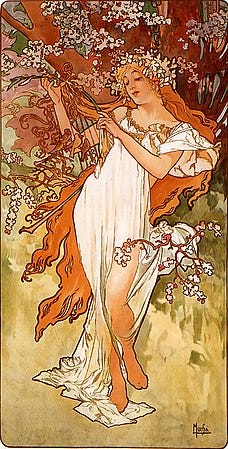
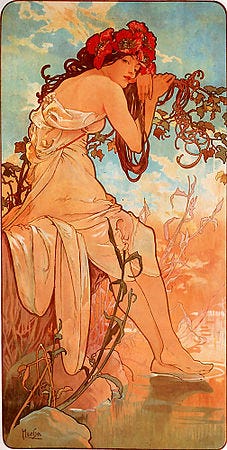

The reason why I’m analyzing these paintings so much, is because Art Nouveau is by far my favourite artistic style, they do not have particular importance to the music video.
“Madonna Pietra degli Scrovigni” by Marie Spartali Stillman/Dante Gabriel Rossetti
Madonna Pietra Degli Scrovigni (My Lady Stone) is a character from a poem by the Italian poet Dante Alighieri (1265–1321). The lady is described as beautiful and inspiring great passion, but “utterly frozen...no more moved than is the stone”. The poem plays off the interaction of winter and summer, dark and light, yellow and green, themes which Stillman explores in this watercolour. She uses imagery of dead leaves, blackthorn and hellebore to symbolise coldness and winter, and the model gazes out at the viewer steadily and calmly.
This type of painting, a half-length femme-fatale in Renaissance costume, was initiated by Dante Gabriel Rossetti (1828–1882) and imitated by others in his circle. In fact, Rossetti had translated, and probably popularised, the poem which lends the painting its title. Stillman and Rossetti were friends: she had modelled for one of the handmaidens in his painting 'Dante's Dream', now in the Walker Art Gallery's collection. It has been suggested that this watercolour is an homage to Rossetti, who had died in 1882.
“A Nymph in the Forest” by Charles Amable Lenoir
“A Nymph in the Forest” is a painting by the academic artist Charles Amable Lenoir.
“Hide and Seek” by Berthe Morisot
“Hide and Seek” is an oil on canvas painting by the French Impressionist artist, Berthe Morisot, from 1873. This piece was exhibited at the very first Impressionist art exhibition in Paris in 1874, along with three other paintings by Morisot. In this piece, Morisot depicted her sister, Edma, and Edma’s daughter, Jeanne, both of whom Morisot had painted several times. Morisot’s subjects, such as this one here, were generally of women and domestic life, both in and outdoors. “Hide and Seek” is currently in the collections of the Bellagio Gallery of Fine Art in Las Vegas, Nevada, in the United States.
“Young Woman Knitting” by Berthe Morisot
Young Woman Knitting is an Impressionist oil on canvas painting created by Berthe Morisot in 1883. It lives at the Metropolitan Museum of Art in New York. Morisot likely painted this work in Bougival, where she spent her summers from 1881 to 1884, possibly using her daughter's nanny as a model.
“The Garden of Earthly Delights” by Hieronymus Bosch
Well, this a very weird painting and the music video is heavily inspired by it. I will try my best to give the context behind it and explain why it’s used in this song, but I will analyse “The Garden of Earthly Delights” in its entirety, sometime in the future.
The Garden of Earthly Delights is the modern title given to a triptych oil painting on oak panel painted by the Early Netherlandish master Hieronymus Bosch, between 1490 and 1510, when Bosch was between 40 and 60 years old. It has been housed in the Museo del Prado in Madrid, Spain since 1939. It depicts the earthly paradise with the creation of woman, the first temptation, and the Fall.
As little is known of Bosch's life or intentions, interpretations of his artistic intent behind the work range from an admonition of worldly fleshy indulgence, to a dire warning on the perils of life's temptations, to an evocation of ultimate sexual joy. The intricacy of its symbolism, particularly that of the central panel, has led to a wide range of scholarly interpretations over the centuries. Twentieth-century art historians are divided as to whether the triptych's central panel is a moral warning or a panorama of paradise lost.
Bosch’s work is full of fantastical beasts, surreal landscapes, and the depiction of the evils of humankind. He was born into a family of artists in the Dutch town of Hertogenbosch, from where he takes his name, and spent most of his life there. In 1481 he married a lady 25 years his senior; it was a propitious move on the artist’s behalf for, by the time of his death, he was among the richest and most respected of Hertogenbosch’s residents. A sign of the artist’s elevated social position was his membership in “The Brotherhood of Our Lady”, a conservative religious group that was also responsible for his early commissioned work.
The extraordinary The Garden of Earthly Delights is a large triptych that depicts Bosch’s account of the world, with the Garden of Eden on the left, hell on the right, and the human world of fickle love moving toward depravity in the centre. The perspective and landscape of the left and central panel match, suggestive of a progression toward sin from one to the other, while the right-hand panel of hell is structured separately and abounds with depictions of humankind’s most despicable acts.
Bosch’s vision was highly fantastical with a strong moral message that made his work very popular during his time. The imaginative quality of his work was to have a significant effect on the development of Surrealism in the 20th century.
Great. Now, let’s find where the music video is similar to the painting.
The Structure
The Flower
The Sphere
The Blue Structure
The Birds
The Strawberries
The Berries
The Throne
The Table
The Owl
In Bosch’s paintings, the strawberry symbolizes wordly desire and the bird symbolizes wordly pleasure. From the Garden of Eden to the present, the owl has been a bystander watching the sins and destruction of mankind, but when the end of the world comes, it transforms into the role of the judge. Bosch’s paintings depict the world’s greed and pleasure-seeking as leading to ruin and hell, but the MV rejects this interpretetion, expressing that hedonic pursuits lead from cold winter and night to day and spring.
According to the official interview, Irene and Wendy in the MV took on the roles of night and winter, while Joy and Yeri took on the roles of day and spring. Seulgi plays the role of the bystander, going back and forth between the two as an absolute. To clarify, the owl in “The Garden of Earthly Delights” represents the Devil and Seulgi plays the exact same role in the universe of “Feel my Rhythm”. We really don’t have to give meaning to every picture in the MV. Most of them are an homage to the classic masterpieces of European art. What’s important to know is that the story highlights Seulgi as the manipulator and creates the paradox, while the rest of the group remains in the dream.
*Attention: “The Garden of Earthly Delights” is a gigantic painting and most of the hidden details are lost by looking at it in full size. If you zoom in and look closely, you will discover about a million other details and elements that give an idea about Bosch’s goal here. The main thing we need to keep in mind is that unlike the “Feel my Rhythm” MV, the painting does not celebrate sin, joy or temptation. It is a warning about the end of days. Bosch was a hardcore Christian and meant for this painting to be read like a book, starting from left to right. First, God created humans and let them live in the Garden of Eden, in perfect peace and harmony (first part of the panel). But, mankind started to live in sin, indulging in the earthly delights (mainly sex, music, dance and gluttony) and ignoring God’s instructions (middle part of the panel). This path, eventually led them to Hell, and now they have to suffer eternal damnation and torture by Satan himself and other demonic monsters (third part of the panel). It has to be mentioned that in all three parts of the painting, several monsters are hidden, signifying that the Devil has existed since forever and temptation has always been lurking.
“Air on the G String” by Johann Sebastian Bach
“Feel my Rhythm” samples “Air on the G String” by Johann Sebastian Bach."Air on the G String", also known as "Air for G String" and "Celebrated Air", is August Wilhelmj's 1871 arrangement of the second movement of Johann Sebastian Bach's Orchestral Suite No. 3 in D major, BWV 1068. Bach's third Orchestral Suite in D major, composed in the first half of the 18th century, has an "Air" as second movement, following its French overture opening movement. The suite is composed for three trumpets, timpani, two oboes, strings (two violin parts and a viola part), and basso continuo. In the second movement of the suite however only the strings and the continuo play. This is the only movement of the suite where all other instruments are silent.
The music of the "Air" is written on four octaves, for first and second violins, viola(s), and continuo. The interweaving melody lines of the high strings contrast with the pronounced rhythmic drive in the bass.
Conclusion
Red Velvet’s “Feel my Rhythm” is a celebration of art history, classical music and artistic expression as a whole. This era includes references to different styles of illustration, drama, portraiture and painting, architecture and fashion, music and dance. Even the lyrics paint this picture of art colliding in a euphoric mania. The song ends abruptly, like a music box snapping shut rather than winding down, but this is clearly a stylistic choice, used to remind us that none of this is real, the “Feel my Rhythm” universe exists inside a paradoxical, manic dream, somewhat similar to “Alice in Wonderland”. I love art that celebrates art, so it’s no wonder I enjoyed this era so much. I don’t think there’s something better than an imaginary, artistic dreamworld and I would love to be transported inside this music box right now.
*Every photo used in this article belongs to Red Velvet and SM Entertainment.
“But I don’t want to go among mad people," Alice remarked.
"Oh, you can’t help that," said the Cat: "we’re all mad here. I’m mad. You’re mad."
"How do you know I’m mad?" said Alice.
"You must be," said the Cat, or you wouldn’t have come here.”
— Lewis Carroll, Alice in Wonderland


